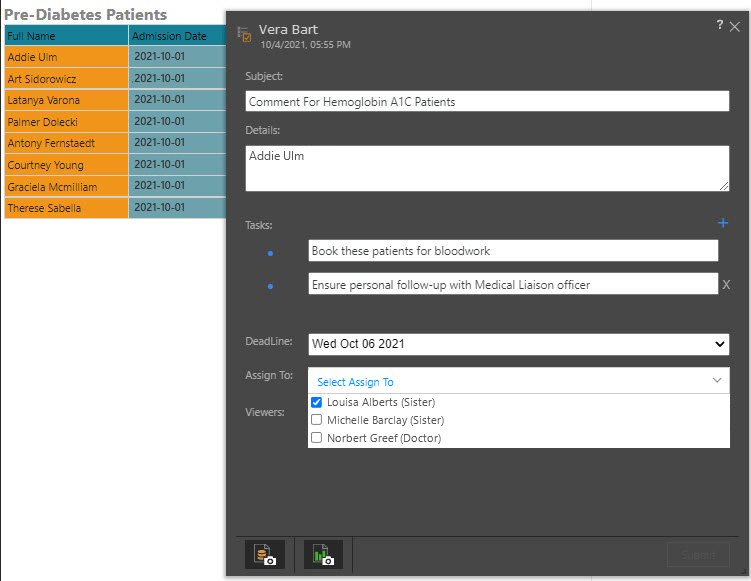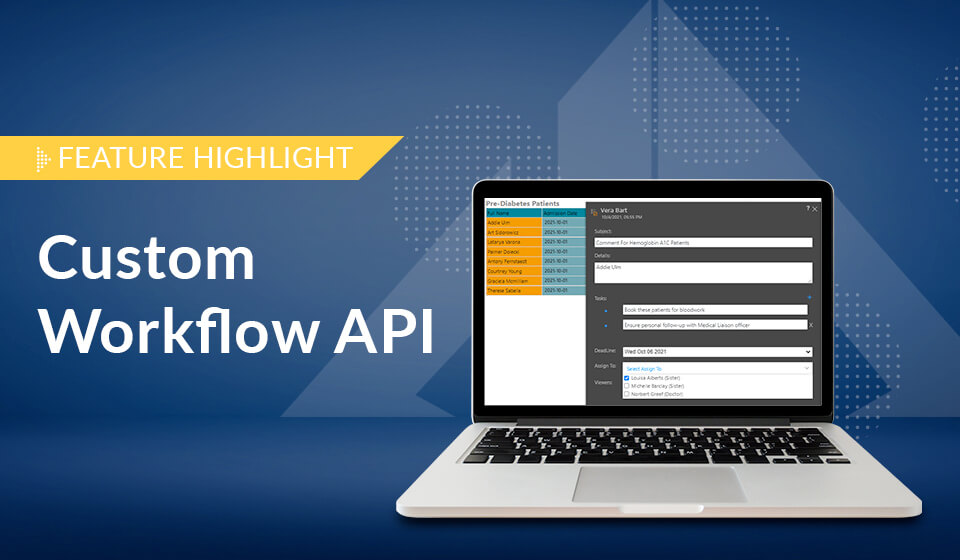Pyramid’s Custom Workflows provides users with new collaborative options from within the analytics platform for delivering actionable analytics that go beyond classic conversations and annotations.
The customization tools and workflow APIs allow customers to build their own data-driven action lists, commentary systems, annotation models, documentation tools, and interfaces with other technology platforms directly into Pyramid using standard HTML, JavaScript, and CSS style sheets.
Extending Conversations
Pyramid’s original conversation workflow framework allows users to annotate and comment on data points, reports, and dashboards using an out-of-the-box tool set. The new Custom Workflow tools use the same demarcation mechanics in the platform which annotate data points (or cells), hierarchical members, reports, or dashboards. However, instead of limiting the workflow to just comments written between colleagues in a conversation thread, the customization opens up the platform to any kind of content and payload; presented in any visual format; and stored internally in Pyramid or externally in any other application.
The Problem
Co-workers collaborating on reports often need to use workflows with custom input fields. For example, upon identifying a patient issue in a patient diagnostic report, a clinician may want to write some action items to the patient management system. While the process of tagging and tracking the patient and their data in Pyramid is a simple click, the format and protocol for the action items is not a simple text message. So, a classic conversation mechanism only solves half the problem.
Most reporting environments don’t extend their collaboration interfaces, resulting in users needing to manually resolve the problem with external tools. This means workflow processes are initialized and run in separate silos from analytics—an approach that is mostly clumsy and inefficient.
Business Case
Vera is the lead clinician for ABC Health Insurance Inc. ABC Health uses Pyramid on their Oracle data warehouse that incorporates medical claims data for their insurance company. The platform has recently been upgraded to include a new patient “action” system using Pyramid’s Custom Workflows, allowing users to annotate relevant patients with intervention flags based on an analysis of their conditions and history that is produced and consumed from Pyramid. The flags, however, are stored in their external patient tracking software, which is used downstream to action the items flagged upstream. The workflows have been setup to both write new status flags to the software as well as read the status flags back into Pyramid for edit and review in the context of the reports and data that generated them.
Vera browses her weekly high-risk patient report and notices that eight new patients have been flagged as potential candidates for HBA1C testing (related to diabetes). She initiates a high-risk patient workflow to one of her nurses to indicate the course of action that should be taken.

The workflow process writes flags to the patient tracking software to indicate the patients require bloodwork and follow-up with a liaison officer. No additional software or manual reminders are required in this integrated solution. The custom workflow has been designed to also allow Vera to set a due date for the actions items and designate a specific nurse to track the patient.
In the future, anyone reviewing the analysis of the selected patients will see the annotation flag inside Pyramid and can use the same workflow mechanism to read the tags that have been set by Vera.

Summary
Most reporting environments have limited annotation interfaces, requiring users to utilize other tools. This results in inefficient processes when trying to deliver actionable outcomes from analytics. Pyramid has extended their conversation workflow framework to a Custom Workflow tool allowing any content, presented in any format, to be stored internally in Pyramid or externally in any other application. The customization tools and workflow APIs allow customers to build their own data-driven action lists, commentary systems, annotation models, documentation tools, and interfaces with other technology platforms directly into Pyramid using standard HTML, JavaScript, and CSS style sheets.














